On Tuesday, Apple's "Peek Performance" event saw an iPad Air refresh, a new iPhone SE with 5G, and the debut of the Mac Studio and Mac Studio Display. Here's what you need to know about the event and what we thought about it.
Like all of the pandemic-era Apple events, Peek Performance was a prerecorded event at Apple Park. Viewers could tune in on their Apple TV at Apple.com, or via YouTube.
The event brought some anticipated updates to Apple's current lineup — namely the iPhone SE and the iPad Air. However, instead of the long-rumored new Mac mini and new MacBook Air, the event debuted the new Mac Studio and Studio Display.
iPhone 13
As seen with the iPhone 12, Apple has chosen to refresh its flagship iPhone model with a new color at the first Apple event of the year.
This year, the iPhone 13 received two new color updates. The iPhone 13 gets a new green colorway, while the iPhone 13 Pro gains a sophisticated alpine green color. No changes to the smartphone's hardware have been made with the refreshed colors.
iPhone SE
As anticipated, Apple has upgraded its budget-friendly iPhone SE model. Designed to target entry-level users, the iPhone SE is the only current model of iPhone to still feature Touch ID and a singular camera on the back.
The third-generation iPhone SE boasts a 4.7-inch display, coupled with aerospace-grade aluminum and the toughest glass in a smartphone on both the front and back. In addition, it's rated IP67 for water and dust resistance.
The device is also designed to minimize impact on the environment. It features 100% recycled rare earth elements in the Taptic Engine and audio magnets, 100% recycled tungsten in the Taptic Engine, and 100% recycled tin in the solder of the main logic board. Like the iPhone 13, the iPhone SE benefits from Apple's redesigned packaging that eliminated the outer plastic wrap.
The new version also features the A15 Bionic chip, which was introduced to the iPhone 13. The 6-core CPU makes the iPhone SE 1.8 times faster than the iPhone 8, and the 16-core Neural Engine allows the iPhone SE to perform 15.8 trillion operations per second. This enables the third-generation iPhone SE to take advantage of new features such as Live Text in the Camera app and on-device dictation and Siri queries.
The device has also received some substantial camera upgrades. The rear camera is now a 12-megapixel Wide camera that features Smart HD 4, new Photographic Styles, Deep Fusion, and Portrait mode.
Lastly, iPhone SE users will be able to take advantage of the latest generation of wireless technology — 5G.
Available in three colors, including midnight, starlight, and (PRODUCT)RED, the iPhone SE is available for pre-order on Friday, March 11, with availability beginning March 18. It starts at $439.
iPad Air 5
We also anticipated seeing an update to Apple's midrange iPad Air. The device has taken up residence between the 10.2-inch iPad and the iPad Pro, often viewed as a device for users who want outstanding performance but don't need the specialized features of the iPad Pro.
While the iPad Air 5 retains the form factor of its predecessor, it gained a significant upgrade — it now boasts Apple's M1 chip. The 8-core CPU provides 60 percent faster performance, and the 8-core GPU provides graphics performance twice as fast as the iPad Air 4.
A new Ultra Wide 12-megapixel camera boasts Center Stage, a feature that automatically pans to keep users in view as they move. It retains the same 12-megapixel rear camera as the previous model.
The USB-C port is two times faster than the previous generation, allowing users to transfer data up to twice as fast as the previous generation, up to 10Gbps.
Users will be able to choose between 64GB of storage or 256GB of storage. Like the iPhone SE, the cellular iPad Air 5 will be able to take advantage of 5G connectivity. This enables the iPad to reach peak speeds of up to 3.5Gbps in ideal conditions.
The iPad Air 5 will be available to order on March 11 and is available in Space Gray, Pink, Purple, Blue, and Starlight. Prices start at $599, and the devices will be available starting March 18.
Mac Studio
Apple also added a new model to its Mac lineup, the all-new Mac Studio. Designed for power users, the Mac Studio is a compact desktop geared toward creative professionals.
Crafted from a single extrusion of aluminum, the Mac Studio takes up a 7.7-inch square footprint and stands 3.7 inches tall. Its small size makes it perfect to fit under most displays.
A new thermal system features double-sided blowers designed to guide airflow directly to the device's high-performance chips, keeping it cool under heavy workloads.
The Mac Studio can be configured with the existing M1 Max chip or the all-new M1 Ultra.
When configured with the M1 Max chip, the new Mac Studio has 2.5 percent faster CPU performance than the fastest 27-inch iMac with 10-core processor. It also enables the Mac Studio to utilize up to 64GB of unified memory.
When configured with the M1 Ultra, it is up to 3.8x faster than the fastest 27-inch iMac Pro and 60% faster than the 28-core Mac Pro. This allows the Mac Studio to playback 18 streams of 8K ProRes 422 video — a feat no other computer can currently do. The Mac Studio with M1 Ultra features up to 128GB of unified memory.
On the back of the Mac Studio, users have access to four Thunderbolt 4 ports, a 10Gb Ethernet port, two USB-A ports, an HDMI port, and a pro-audio jack. Wi-Fi 6 and Bluetooth 5.0 are built-in.
On the front, users gain two USB-C ports that support up to 10Gb/s USB 3 on the Mac Studio with M1 Max and two Thunderbolt 4 40Gb/s ports on the Mac Studio with M1 Ultra. In addition, both configurations offer an SD card slot.
The Mac Studio also offers extensive display support, allowing users to connect up to four Pro Display XDRs and a 4K TV at once.
The Mac Studio is available in two main configurations. The M1 Max Mac Studio starts at $1,999, while the M1 Ultra Mac Studio starts at $3,999 and can be ordered from Apple with availability beginning on Friday, March 18.
Mac Studio Display
Announced alongside the Mac Studio is Apple's all-new Studio Display, a high-end display geared toward creatives.
The Studio Display is crafted out of aluminum and features slim edges. It boasts a 27-inch Retina display with over 14.7 million pixels, making it a 5K display. It boasts 600 nits of brightness, P3 wide color, and support for more than one billion colors. Like other Apple displays, it features True Tone technology.
Three USB-C ports deliver speeds of up to 10Gb/s, allowing users to connect high-speed peripherals, storage, and networking into the splay. In addition, an included Thunderbolt port will enable users to connect Studio Display directly to their Mac of choice with a single cable. The port also delivers 96W of power, allowing users to fast-charge a 14-inch MacBook Pro.
If a user chooses, they can opt for a Studio Display that uses Apple's nano-texture glass, which scatters light to minimize glare in bright workspaces.
Users can opt for a few different stand options. The base stand allows users to easily tilt their display up to 30 degrees. An optional tilt- and height-adjustable stand features a counterbalancing arm that makes the display feel weightless as a user adjusts it. Users can also opt-in for a VESA mount adapter, which enables the display to be used in either landscape or portrait orientation.
The Studio Display features the A13 Bionic chip, powering the display's audio and video systems. In addition, it boasts a 12MP Ultra-Wide camera with Center Stage, perfect for video conferences and FaceTime calls.
A studio-quality, three-microphone array allows for crystal-clear calls and voice recordings. A six-speaker sound system features four force-canceling woofers and two high-performance tweeters. The speakers also support spatial audio for music and video with Dolby Atmos.
Users can order the Studio Display now, with prices starting at $1,599. Devices will begin shipping on March 18.
AppleInsider's takeaway
As AppleInsider covered the "Peek Performance" event on Tuesday, each staffer found something different to love — or perhaps dislike — in Apple's newest offerings.
Mike Wuerthele
The morning after, I'm still processing how I feel about the event and the products released. Leading off, the new iPhone SE has been one of Apple's worst-kept secrets in years.
That new iPhone SE is a price-conscious 5G phone that lacks the least-available 5G feature in mmWave. There's already some Internet grousing about that, but even today, well more than two years after the first 5G rollouts, you still have to be standing outside just so, awkwardly, to get that mmWave notification from your carrier on your phone. For the price, and the state of the 5G buildouts, this feels to me like just something to complain about, with no actual impact on day-to-day use.
The iPad Air is nice, and the M1 chip in it is a perfect example of Apple's tech migration. It starts the new technologies on the iPad Pro, then moves them down, gradually, over time. Sooner or later, this will be what the low-end iPad looks like.
And, I'm recommending the new iPad Air for most new iPad users now. The low-end serves education well, the high-end serves the iPad-centric workflow the best. The new iPad Air serves the middle of the user bell-curve very well, for not much more than the original iPad cost.
I've not made it a secret that I've got a Mac-centric workflow. Because of some fortuitous trade-ins and other assets that I had on had related to my Intel Mac at the time, I've been using a 16-inch M1 Max MacBook Pro. Combine that, with increasing travel, this event's Mac Studio isn't for me.
But, like William and I said on Tuesday, the Mac Studio is the closest to the long-rumored and user-demanded Xmac that sits in between the Pro and consumer lineups. Headless, keyboard-less, and powerful, it brings Mac-based computing beef in a small form-factor, occupying not all that much more room than a Mac mini.
At $1499 to start, the new Studio Display is less expensive than I was expecting. At the same time, it is more expensive than the value I'd get if I purchased it.
That said, it's a great monitor, competitively priced with other 5K displays at similar pixel densities. And, at that price, it brings more to the table with the quality speakers and webcam than the others.
And as you'd expect, reactions to it have already been polarizing. Once again, this is very much a device that you know if it's perfect for what you want it to do. Outside of that subset of people, there is very little use or need for it.
This all said, I am looking forward to reviewing the high-end Mac Studio in conjunction with some friends of mine who can truly leverage the power of the device. I'm also sure that I would appreciate the quality of the new Studio Display.
But, I will not be buying either.
Malcolm Owen
The event had Apple offer a lot over its three primary form factors, but not everything was smooth. Weirdly, I was most disappointed by the introduction of 5G.
Sure, the iPhone SE now uses 5G, as does the considerably updated iPad Air, but both just support sub-6GHz bands, not mmWave. The problem is that every carrier and device producer markets 5G as a blisteringly-fast platform, so the public's expectation is for devices using it to have speedy connectivity, which these won't have.
This may seem like short-changing consumer expectations, as if there should be a massive asterisk next to the term "5G" in this case. The hardware technically supports 5G, but not fully.
On a more positive note, the iPad Air's addition of the M1 chip turns what is a bridge between iPad and iPad Pro into even more of an iPad Pro-lite device. It now has a chip and the power to match the premium models.
This makes it a fairly good option for users who need that high performance in a tablet, but without the periphery like miniLED or LiDAR.
Since the iPad Air is now using M1, the next update of the iPad Pro lineup must use newer chips. Since that could be something like the M2, we have a few months of dreaming about performance gains ahead of us.
Lastly, the Mac Studio and the M1 Ultra was a stunning addition, especially the latter. One that also expands the expectations of what Apple could do for the Mac Pro, whenever it updates that line.
Since the M1 Ultra is basically two M1 Max chips connected using UltraFusion, it's not hard to imagine how far Apple could take the principle when it comes to M2 and the Mac Pro. Could it offer the equivalent of four M1 Max chips slapped together with the magical chip duct tape as a 40-core option? What about 60 cores? 80? What's the limit for this?
Time will tell.
William Gallagher
We're now used to Apple making technically exquisite video launches and being world-class producers and filmmakers. So maybe that's why they shook it up a little bit and gave us their first-ever cliffhanger ending.
I don't remember Apple ever dropping a big winking hint about what's coming next, though as surprises go, saying the Mac Pro is next wasn't the biggest. It might, though, have been essential.
Apple did rather spend a significant amount of time effectively dissing the Mac Pro, and that machine has its loyal users - loyal users who have spent an awful lot of money on their devices. So telling them that they aren't forgotten may have been as wise as it was wry.
What I do remember is the last time Apple introduced a new Mac. It was the iMac Pro in 2017, and, just as now, the new machine offered amazing performance. The new Mac Studio isn't the most attractive box Apple has ever made, but it is the one thing from the event that I want.
I'm not going to get one, though. Nor will I get an iPhone SE, though, for different reasons.
I've recently been using a 2020 iPhone SE and while I can see that it, and especially the new 2022 model, are the absolute perfect sweet spot, I wouldn't buy one. I don't like the design anymore, even as I do quite like the smaller size.
I'm also not buying an iPad Air, though if this event had been nine months ago, I would have. The new iPad Air is everything I wanted from the iPad Pro when I bought that last year, plus it comes in many colors.
If the Apple Studio Display came in colors, too, I might be more tempted. As it is, the price is high enough and the resolution is not high enough that I'm going to switch from my 49-inch monitor.
Stephen Robles
Over the past 18 months, the most exciting announcements from Apple have been about the Mac. The March 8 "Peek Performance" event was no different, with Mac Studio and Studio Display stealing the show. Apple's first high-end desktop Mac looks to be a powerhouse with M1 Ultra, and its I/O port variety is impressive.
While my personal podcast and video workflow can't justify the power and cost of M1 Ultra, Mac Studio with M1 Max option is the perfect fit. Its four Thunderbolt 4 ports, plus 2 USB-C ports on the front, which become Thunderbolt on M1 Ultra models, will eliminate my need for Thunderbolt docks on the desk. SD card slot on the front is another welcome design choice.
I'm going to keep using an LG UltraFine 4K display for the time being and wait to see the Studio Display in-person at an Apple Store. But it's a tempting monitor, and I would appreciate the built-in FaceTime camera.
During the event, Apple SVP John Ternus mentioned that they have "one more Mac to go" to update with Apple silicon: the Mac Pro. It will be interesting to see if Apple's larger 27-inch iMac is discontinued in favor of the new Studio Display and Mac Studio for professionals.
Darryl Boxberger
Apple's March Event has been lower-stakes than its September and WWDC events, so I came in with easy expectations. New colors for iPhone, an updated iPad Air, and a whole new Mac desktop-class with a re-introduction of the mid-tier Apple display are certainly noteworthy for a lower-profile trend for Apple's Spring events.
The production quality is still top-tier, and one with the attention to detail you would expect from Apple. Even with the number of things Apple announced, they managed to keep it around an hour. Events of years past can sometimes go up to two hours, but they made an effort to keep it short over the past couple of years. No jokes, no unnecessary fancy transitions— just bullet point after point. Products are given the hook off the stage as soon as all their points are covered. That's a big departure from years past's lavish and celebratory events.
I'm an "all-Pro" power user, so models positioned below the Pro lines of Mac, iPhone, and iPad were not in my crosshairs. However, I have to say that the Mac Studio and the Studio Display were the most remarkable moves I've seen from Apple in years.
Not only did Apple just roll back many of its pushes to minimalist computers and redoubled its efforts to focus on the Mac, they finally delivered on an intermediary product line between casual consumer and professional. The Mac Studio and Studio Display are simply devices I wouldn't expect Apple to make after 2016, but they did, and for me, that's a huge commitment. I have no use for a Mac desktop, but that Studio Display is undoubtedly enticing, even if it's still $1599.
The Spring Apple events had always been delightful with the smaller product launches and cheeky color refreshes, and this is no exception. This "Peek Performance" event is one of the greatest Spring events I've seen from Apple, for what it means just hidden below the surface.
Mike Peterson
Some of the last-minute leaks prior to the event revealed the Mac Studio, perhaps the most surprising product of "Peek Performance."
The iPhone SE and iPad Air were less groundbreaking devices than anything Apple might release in the fall. However, their lower price points and top-tier features are welcome because they're likely to expand Apple's customer base and allow a wider audience to take advantage of new features like 5G and the company's latest Apple Silicon.
The Apple Studio Display was a neat addition. I appreciate that it's a monitor that doesn't cost upwards of $5000, and the audio and visual features are perfect for the work-from-home and remote education crowd.
Apple's Mac Studio seemed to be the event's flagship, and for good reason. This Mac actually appears aimed at the professional community with few compromises that I can see.
The most surprising thing about the Mac Studio is the price point. I expected a price tag more in-line with the iMac Pro or Mac Pro for all that power.
Analysts have been saying that the switch away from Intel and toward Apple Silicon would be cost-saving for Apple. However, it would be easy to assume that Apple wouldn't have lowered its prices. While it's impossible to argue that Apple devices are now "cheap," it can be safely said that the company is delivering a lot of performance-per-dollar.
 Amber Neely
Amber Neely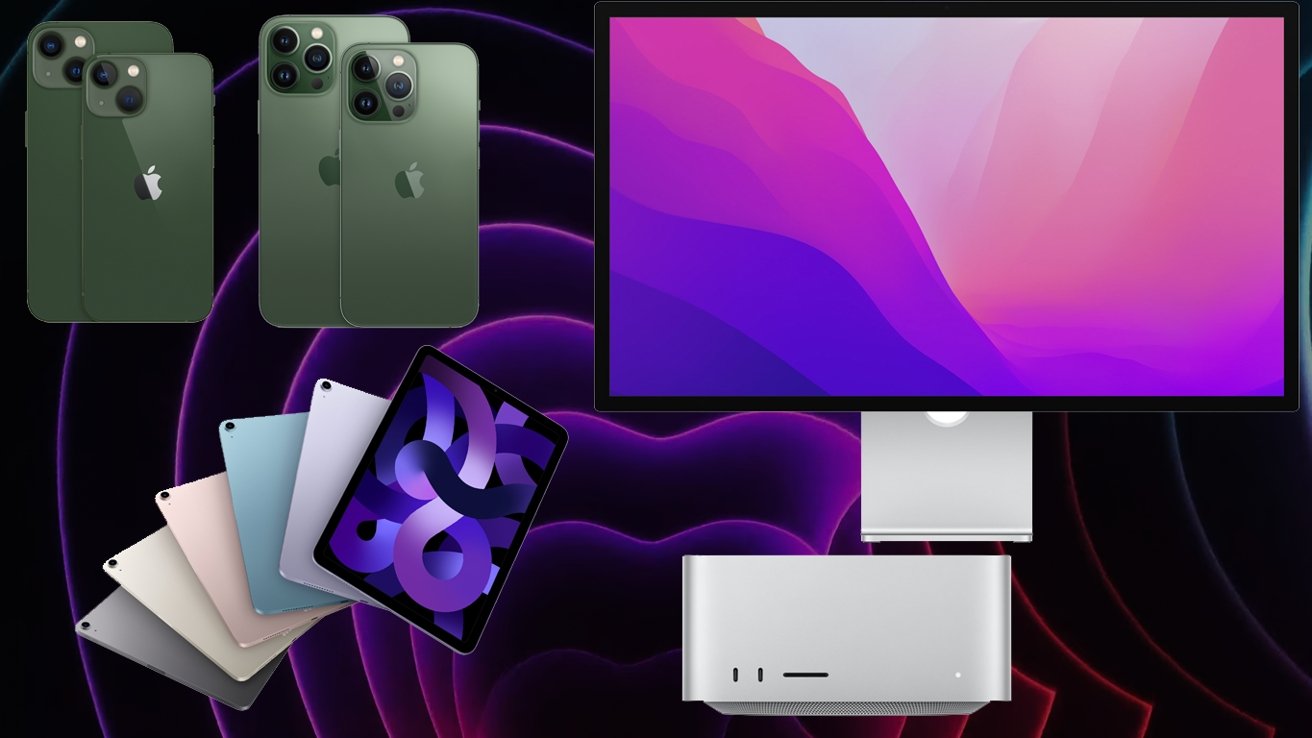
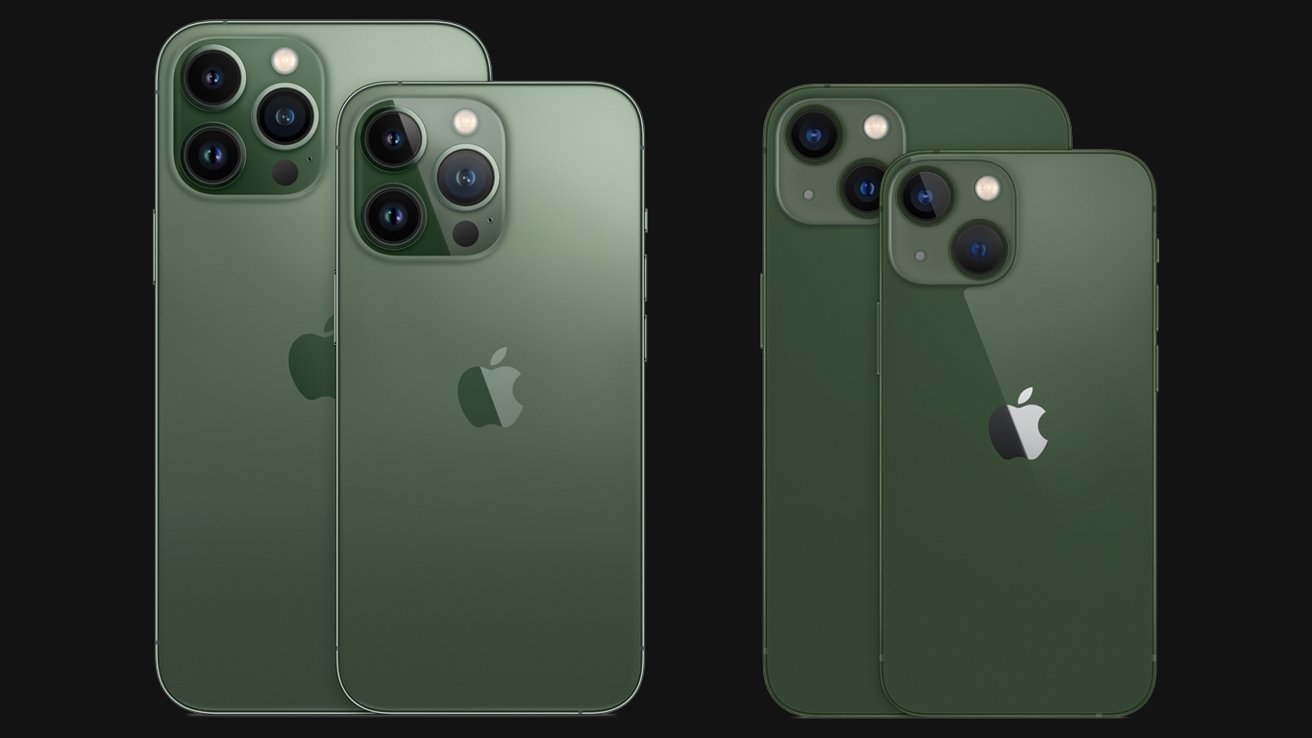
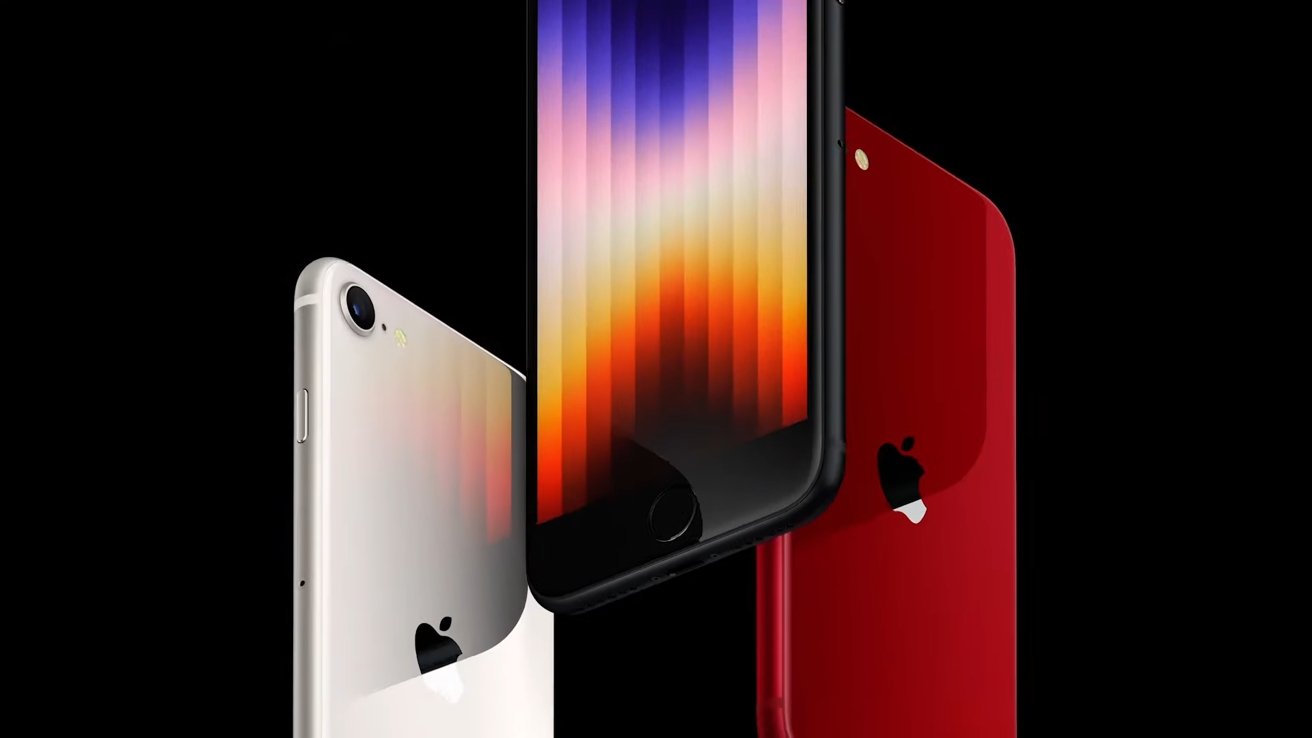
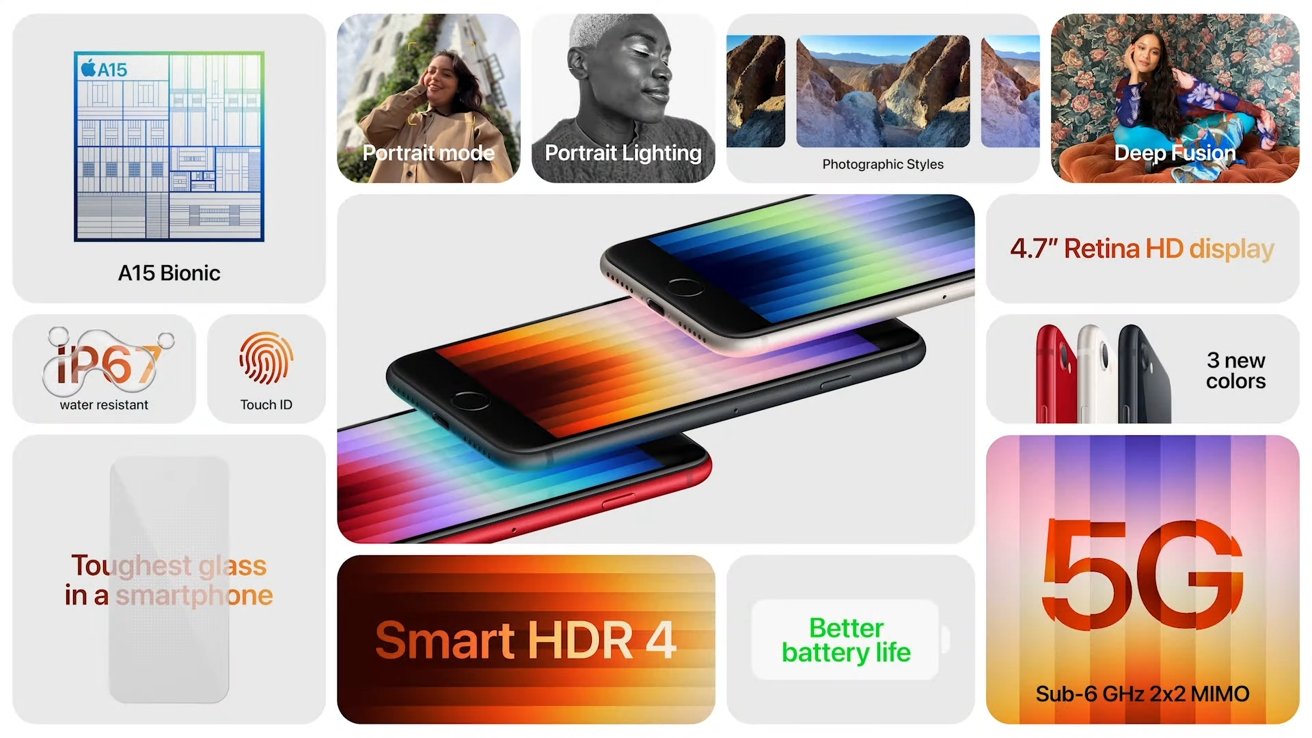
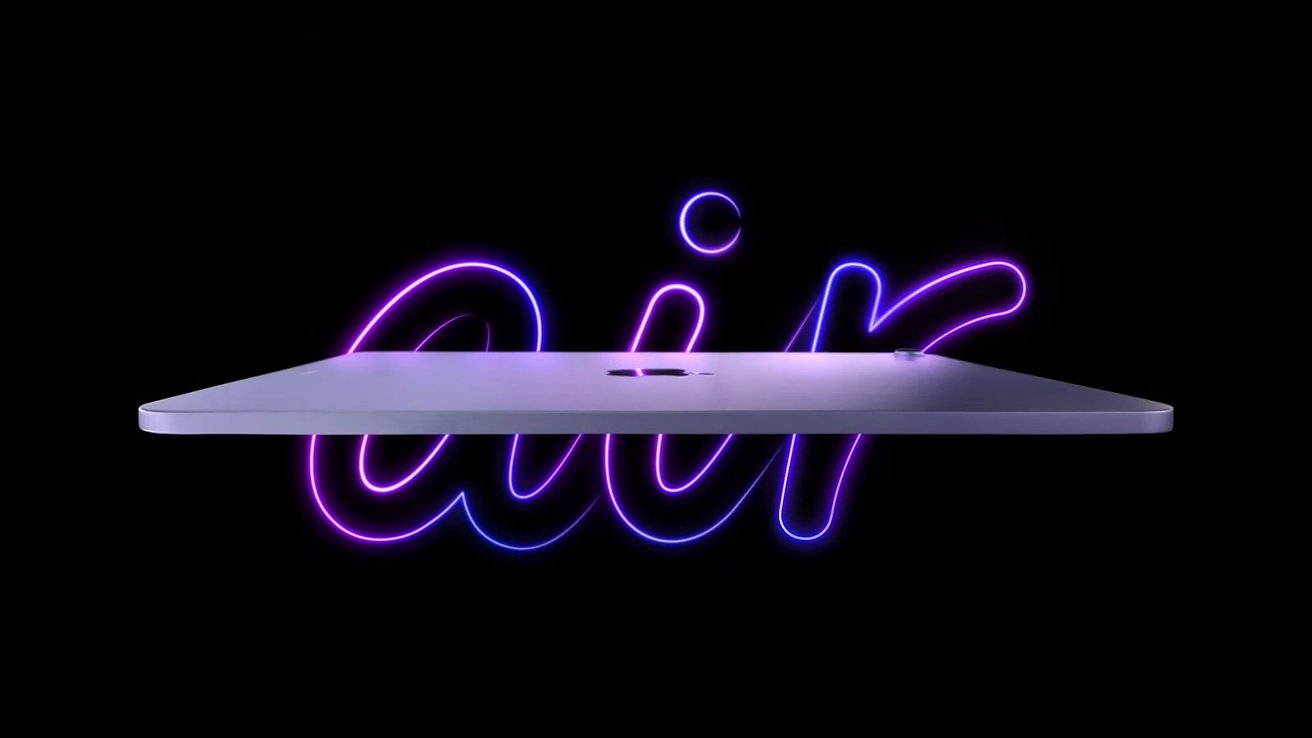
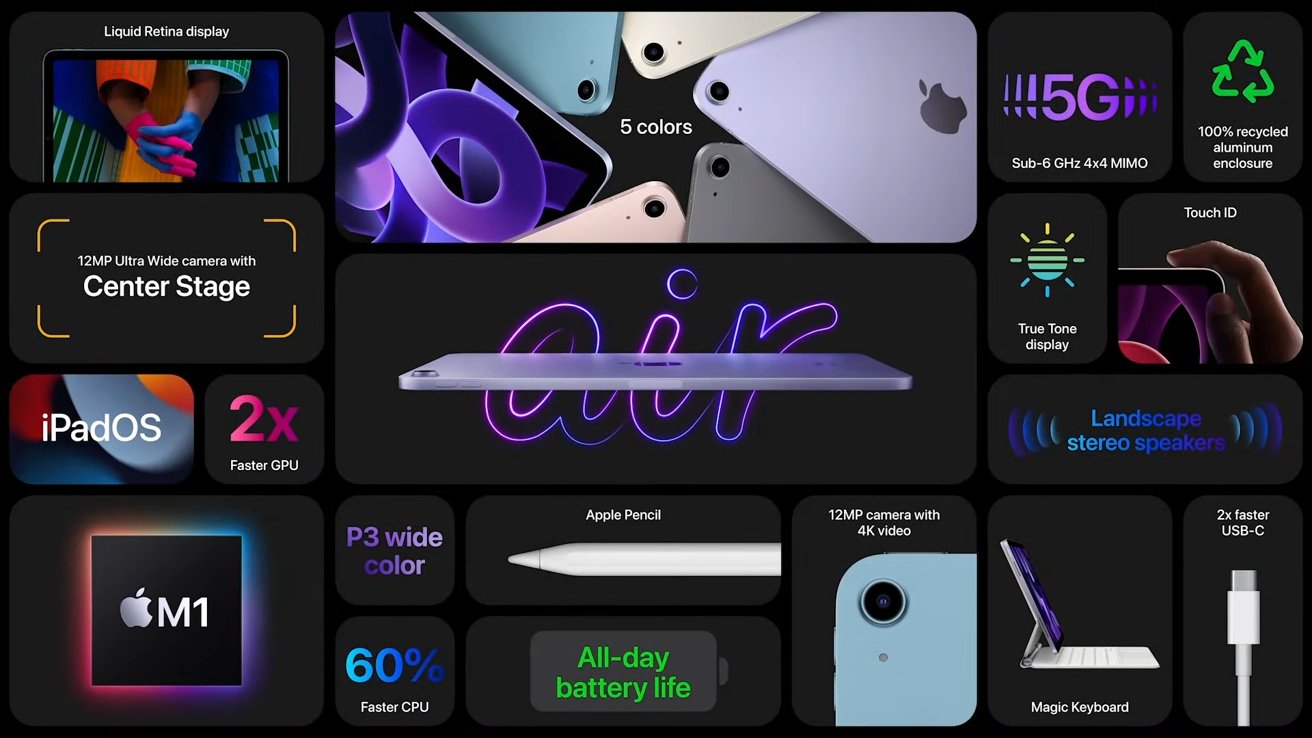

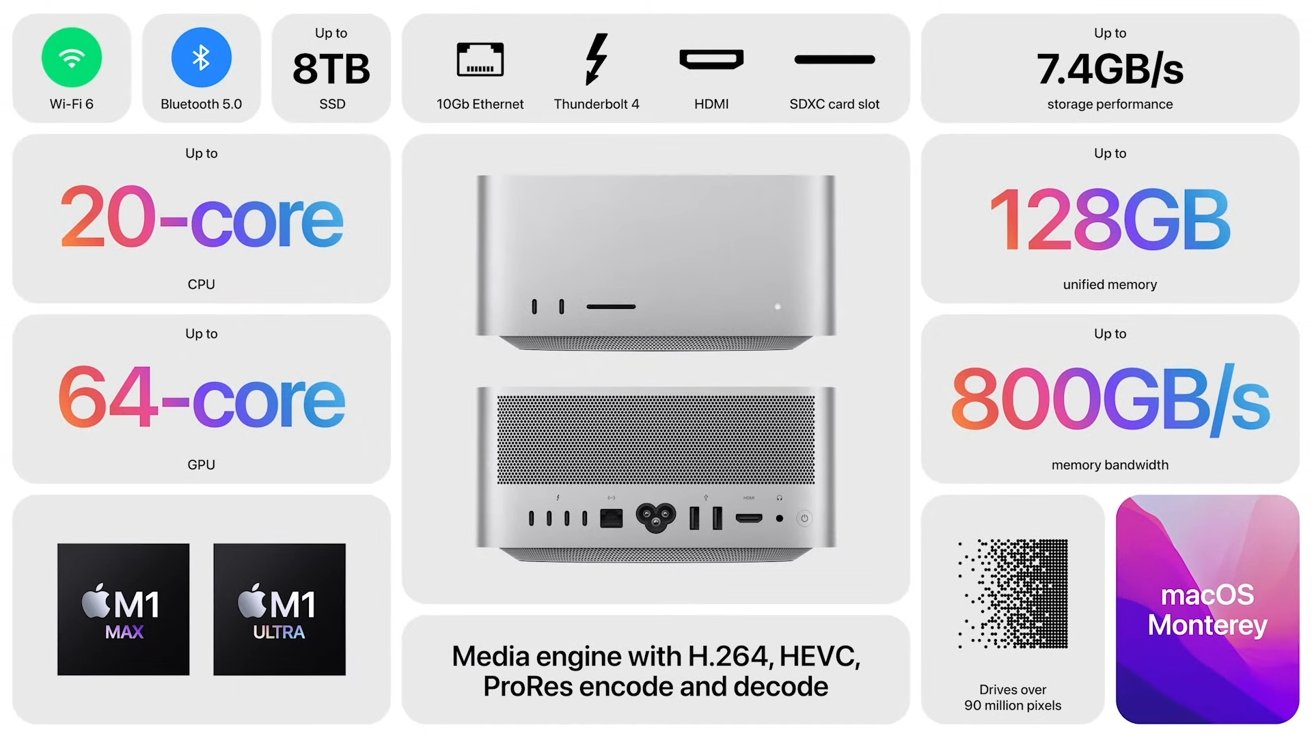
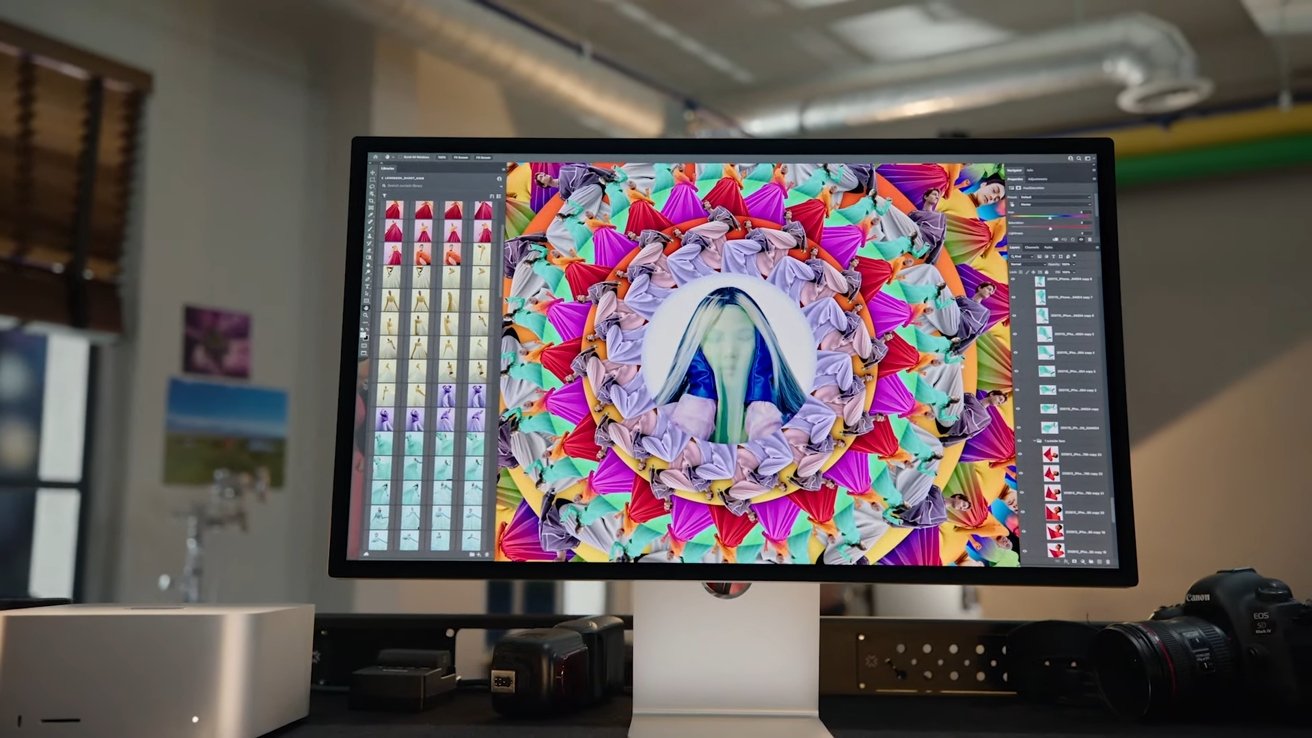

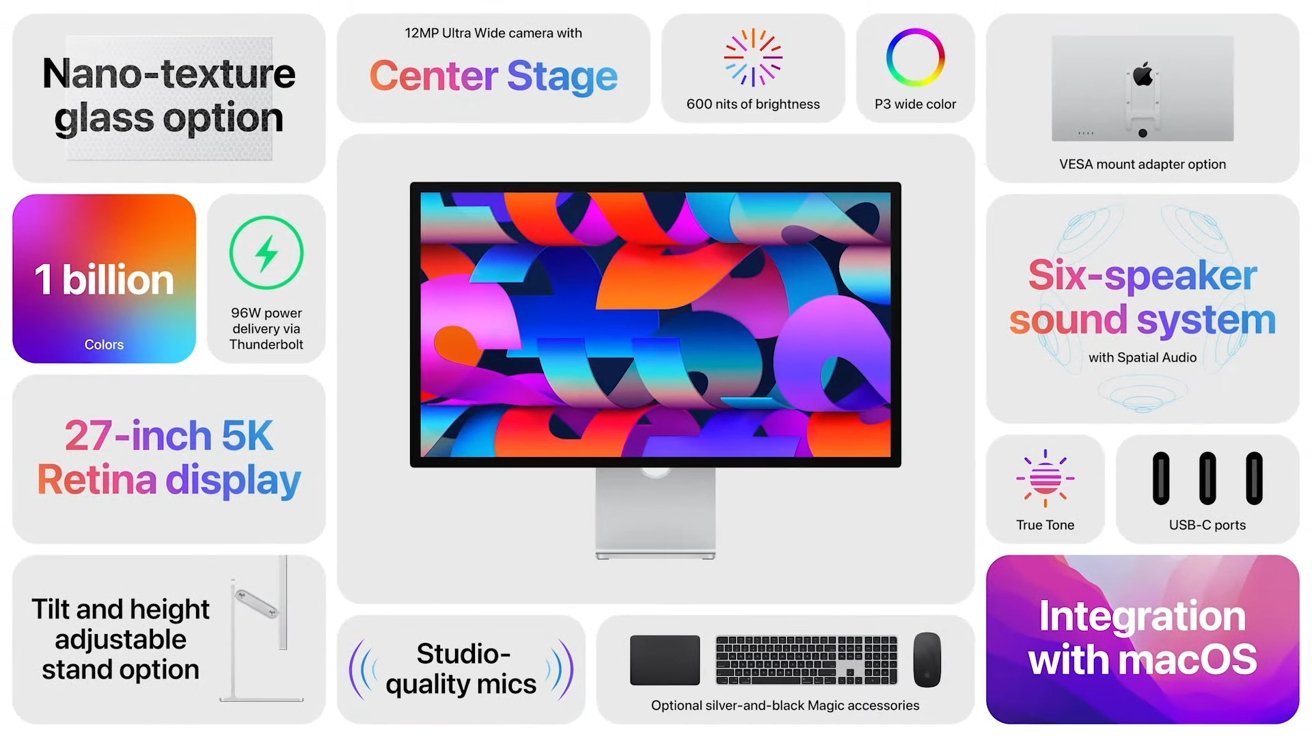
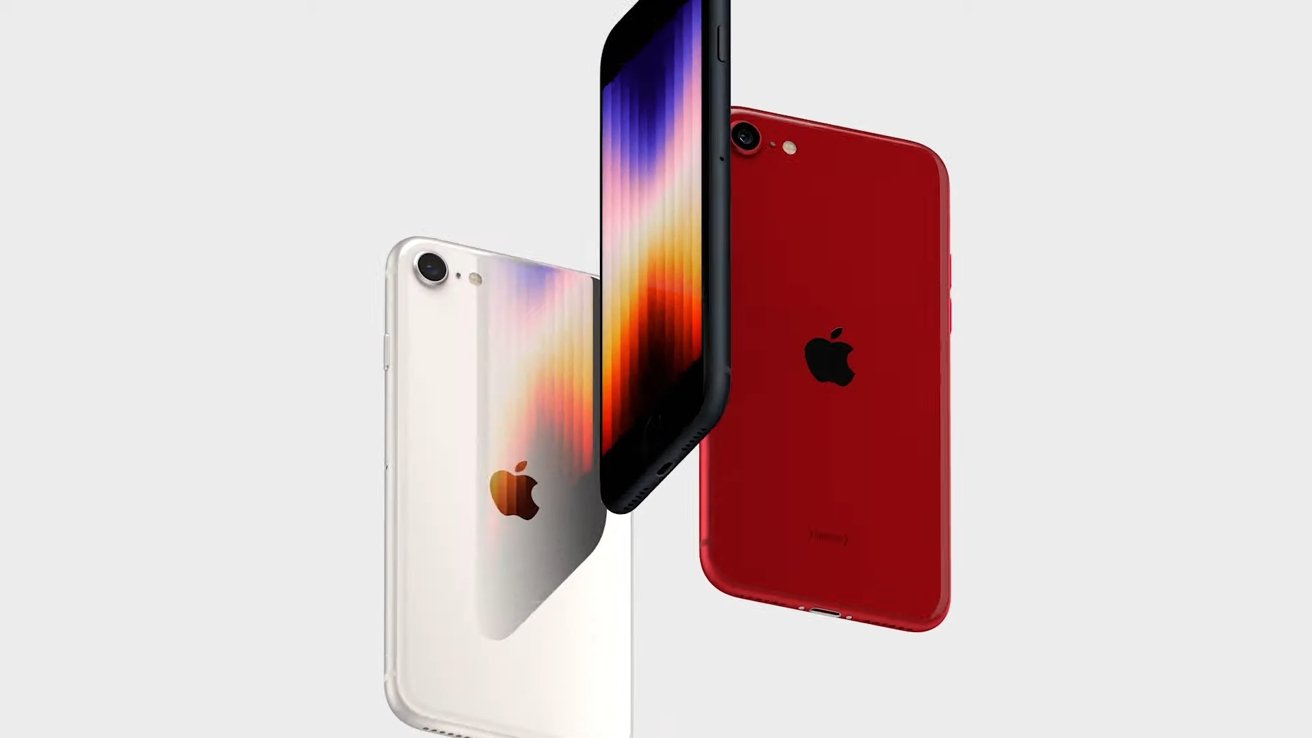
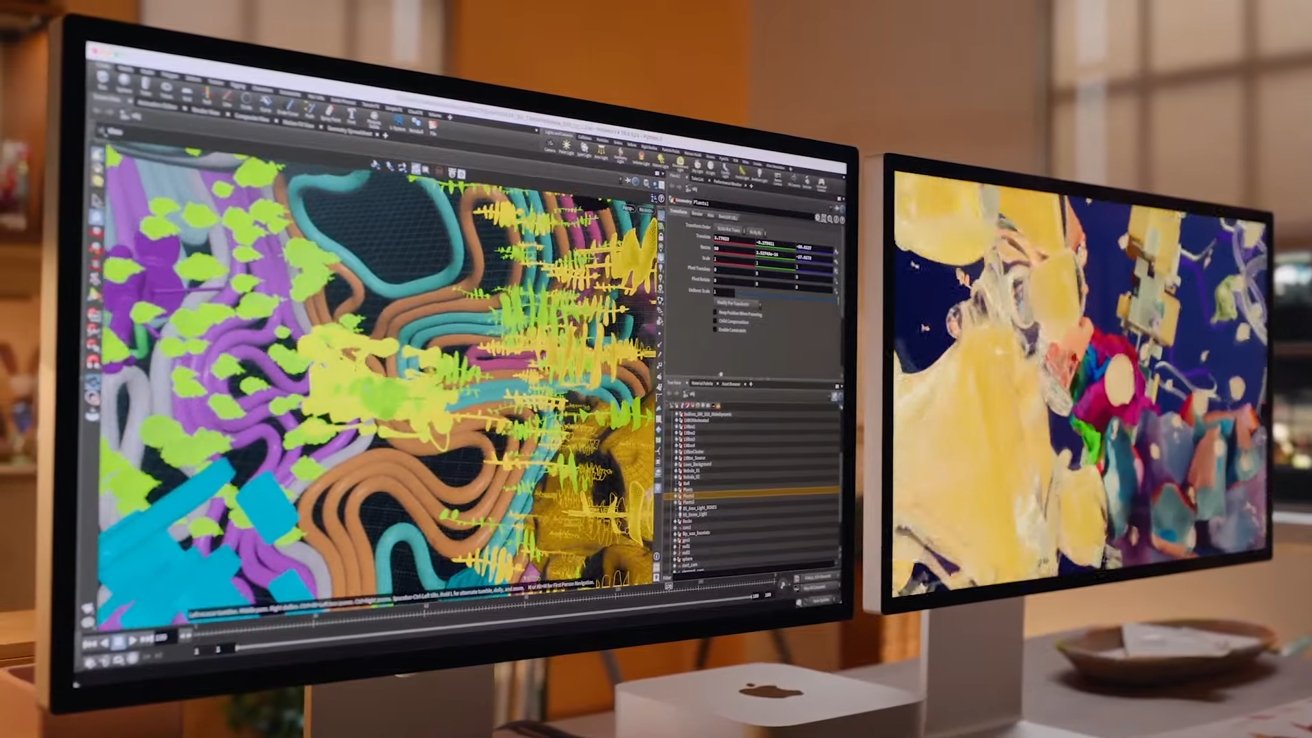








-m.jpg)






 Thomas Sibilly
Thomas Sibilly
 Wesley Hilliard
Wesley Hilliard
 Marko Zivkovic
Marko Zivkovic

 Malcolm Owen
Malcolm Owen


-xl-m.jpg)









13 Comments
Wow, for non-pros this event was a nothingburger. Remember “the computer for the rest of us”? I guess I can hope that someday this whiz-bang technology will eventually trickle down to actual consumer products for those of us without studios. Oh . . . new colors! I want a replacement for my aging 27” iMac, not a Mac Mini with a third party inferior screen.
My ‘aging’ late 2015 iMac was looking to get replaced. Spec’d out upwards of $3000 in 2015 I was figuring / hoping a mid $3k price tag to replace it. Yesterday’s studio / display have me looking $4100+. I’ll swallow hard, stick a crowbar in my wallet for that setup with no regrets.
My 7 yr old 5k iMac screen is still beautiful. I expect nothing less so from what was shown yesterday.
We'll probably see the base model iPad move to the A15 soon since they have locked that chip in for 2 years with the SE, simplifying the chain further - I was kinda shocked they didn't announce it here. The performance improvement is moot, but the battery life improvements that it would get by doing so would be epic.
Your post is unclear about what you are looking for, since every use case is already covered short of the iMac Pro. Are you dismissing the Mini because in the past it was an underpowered budget option? Those days are gone - it's way more powerful than any PC at the same price point now, capable of running anything you throw at it short of gaming PC workloads (which isn't really a Mac thing at this point anyway). It really is "the computer for the rest of us", even a year later. What workload are you asking for that it can't do?